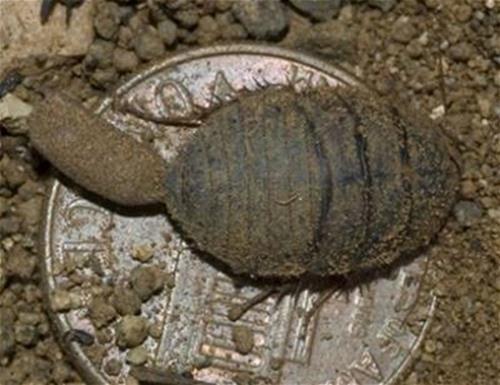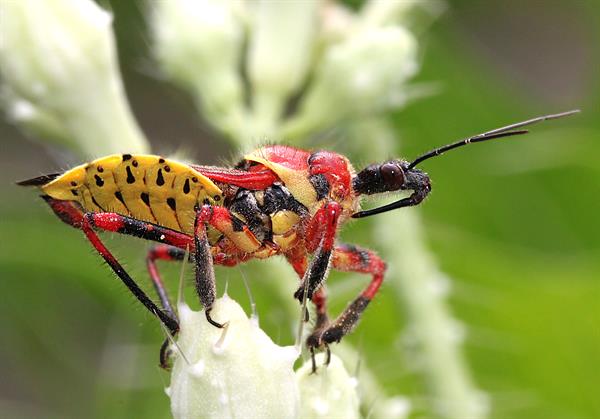
(Adapted from “Overseeding Winter Grasses Into Bermudagrass Turf”, by David Kopec and Kai Umeda. University of Arizona Cooperative Extension Publication #AZ 1683).
Overseeding is the practice of spreading grass seeds directly into standing turf, and this could be done for various reasons – to improve appearance, change the color and thickness, fill bare areas, or to revive an old lawn that has been affected by pests or diseases. One of the most common applications of overseeding is to seed cool-season winter grass into an existing warm-season grass lawn prior to it going into dormancy for the winter.
Warm season turfgrasses (bermudagrass, zoysiagrass, and St. Augustinegrass) become dormant and typically lose their green color during winter (Figure 1). Overseeding the warm-season grass provides a green lawn through the winter until springtime, when the warm-season grasses come out of dormancy and resume their growth.

Figure 1. Warm season grasses lose their green color during winter and
turn a golden tan. (Photo: Petra Faltermaier).
Bermudagrass lawns are commonly overseeded, and the popular choice of winter grass for overseeding is perennial ryegrass. St. Augustinegrass and zoysiagrass are generally not suited for overseeding.
Read more about the process of overseeding winter grasses into summer lawns and the spring transition, in our publication.
Overseeding under drought conditions?
Many homeowner associations in Arizona are encouraging residents to skip overseeding this year, to save water and resources. The following links provide information that might help you take a decision:
Alternatives to overseeding
Turf colorants such as paints and dyes might serve as a good alternative to overseeding. The colorants keep the dormant grass green through winter, and also help it to come out of dormancy earlier because of solar heat retention, which warms up the soil and roots. Read more about using turf colorants in this article.

Figure 2. Turf colorants being applied to dormant bermudagrass in a school playing field.
We’ll Take Your Ticks

The Border Tick and Rickettsia Surveillance (BiTeRS) program of the Pacific Southwest Center of Excellence in Vector-Borne Diseases (PacVec) offers services to enhance surveillance for ticks and tick-borne pathogens of human health concern in California and Arizona. This is made possible through our project leaders at the University of California, Davis, and the University of Arizona, and collaborating local and state agencies, including the California Department of Public Health and the Arizona Department of Health Services.
We help every step of the way, and identification and pathogen testing are FREE. Collection supplies and protocols are provided, and partners receive all results on ticks they have submitted.
We work with partner organizations to:
Partner organizations may be:
Download the BiTeRS Flyer for distribution: https://pacvec.us/biters/

October Is National Children’s Health Month
During October, EPA raises awareness about children's unique vulnerabilities to environmental exposures and focuses special emphasis on kid’s health through social media, events, and communication with partners. The US Environmental Protection Agency (EPA) Office of Children's Health Protection celebrates its 25th anniversary in 2022. The office was established by executive order in 1997, and to this day continues to build on the excellent progress made to confront issues and provide solutions to children's environmental health. This Children’s Health Month’s theme is to protect children at all stages and in all communities. Childhood is made up of a sequence of stages, with each stage facing unique environmental risks. Access EPA’s resources related to Children’s Health Month (articles, graphics, printable and shareable handouts and activities for kids) at https://www.epa.gov/children/childrens-health-month.

What the Heck was this? (From September Newsletter)

Answer: This is a female desert cockroach (sand cockroach) with her egg sac. Desert cockroaches (family Corydiidae) can thrive in desert landscapes around homes and similar structures. They are nocturnal and hide under sand, gravel, wood piles or mulch during the day, and feed at night.
Congratulations to Master Pest Detective Jennifer Sweeney BCE, MS, All-American Pest Control Inc. Nashville, TN.
What the Heck Is This?

Photo: Kevin Lentz
If you know what these are email the answer to Dawn at dhgouge@email.arizona.edu. You will not win anything if you are correct, but you will be listed as a “Master Pest Detective” in the next newsletter issue.
Pest Management and Pesticide Safety Seminars 2022 for Golf and Landscape Maintenance
The University of Arizona Cooperative Extension Turfgrass Program will present the annual Pest Management and Pesticide Safety Seminars 2022 for Golf and Landscape Maintenance personnel. This year, they will be offered on two dates and locations: December 8th at Sun City West, and December 9th at Mesa. Both events will feature presentations by experts on various aspects of turf and landscape pest management and pesticide safety. Six AZ Dept. of Ag. ESD (Ag.), PMD (OPM) and GCSAA CEUs will be applied for. Registration information and schedule coming soon. For more information, please contact Shaku Nair at nairs@arizona.edu.
Southwest Rodent Academy, 2022
The University of Arizona, in collaboration with the Arizona Pest Professional Organization, will host 2022 Southwest Rodent Academy, November 29th and 30th for pest management professionals and those who are interested in rodent management. This workshop is an in-person event at the Maricopa Agricultural Center, 37860 W. Smith-Enke Rd. Maricopa, AZ 85138. Same 6 AZ PMD CEU Hours will be provided each day. Don’t miss this great training event! Space is limited and please register here: https://www.azppo.org/event-4939380.
For more information, please contact Lucy Li at lucyli@arizona.edu.
National Park Service IPM Webinar Series
"Integrated Pest Management for Round-tailed Ground Squirrels" on Thursday, October 27th at 11:00am MT. Register here! (https://attendee.gotowebinar.com/register/5210887295684525839)
The first Friday of each month, spend half an hour over lunch learning about practical solutions for pest problems with the New York State IPM Program. Each presentation will end with an IPM Minute.https://nysipm.cornell.edu/whats-bugging-you/first-friday-events/
Upcoming First Friday Events:
Horticultural Research Institute (tHRIVe) web series
Free and open to the public, registration required. Times listed are Eastern Time.
https://www.hriresearch.org/thrive-web-series
Stop Pests in Housing Webinars for Multifamily Housing
You’ll learn there are three very simple steps that will immediately start you on the path to relief. Implementing these steps starting now, will hit infestations before next season and start you on the path for reducing complaints into next summer and beyond! Register at https://cornell.zoom.us/webinar/register/WN_3sjBsI6uSFSpdpipqYBBIQ
EPA Webinars about Integrated Pest Management
The EPA Center of Integrated Pest Management hosts a webinar series featuring national experts from across the country relaying educational and practical strategies for establishing and improving integrated pest management programs in buildings. We invite you to review the information on the past topics. Register for new or review archived IPM webinars https://www.epa.gov/ipm/previous-webinars-about-integrated-pest-management.
Upcoming EPA Webinars Offering AZ Credits
“Identifying and Managing Toxic Plants” November 15th, 2022 12:00 – 1:30 PM MST. Learn about some dangerous, toxic plants scattered through forests, fields and even sneaking into your landscaped areas. These plants can be extremely toxic to the touch-with sap that cause burns and blindness to humans and dogs and can cause respiratory failure in other mammals if ingested. Learn how to identify these plants, their range, and how to remove and control them. Discover how these Invasive plants are controlled in a larger scale such as rangelands, and field crops. Register at https://attendee.gotowebinar.com/register/5147869885647118860
“There’s a Fly in My Soup–IPM in Restaurants” December 6th, 2022 12:00-1:30 PM MST.
Restaurants are in business to feed people, but unfortunately, they can also be a breeding ground for pests because they provide food, water, and shelter. Restaurants are held to a high standard for managing pests by customers and their local food safety inspectors. This webinar focuses on the major pests found in restaurants (flies, cockroaches, and rodents) and the IPM tactics for their prevention and control. Flies in kitchens, food storage, service, and eating areas can cause food contamination and pose a health risk. Key species include house, fruit, and drain flies, and many others. Correct identification of flies is important and influences management decisions because different species have distinct needs and behaviors. Also discussed will be the importance of selecting a pest management service provider.
Register at https://attendee.gotowebinar.com/register/7650471600249648652
View recordings of previous EPA Integrated Pest Management Webinars at https://www.epa.gov/managing-pests-schools/upcoming-integrated-pest-management-webinars.
For more information about the EPA Schools program: http://www.epa.gov/schools/.
To view all our previous newsletters, visit: https://acis.cals.arizona.edu/community-ipm/home-and-school-ipm-newsletters.

Designed for professionals with less than five years’ experience in pest management, the Certified IPM Technician (CIT) credential demonstrates a foundational skillset and commitment to the IPM principles and practices. Applications for the credential are now being accepted by the ESA Certification.
ESA also offers several other certification programs for professionals:
Acknowledgements
This material is in part funded by the National Institute of Food and Agriculture, U.S. Department of Agriculture, under award number 2021-70006-35385 that provides Extension IPM funding to the University of Arizona. It is funded in part by the USDA National Institute of Food and Agriculture through the Western Integrated Pest Management Center, grant number 2018-70006-28881. Additional support is provided by the UA Arizona Pest Management Center and Department of Entomology. Any opinions, findings, conclusions, or recommendations expressed in this publication are those of the authors and do not necessarily reflect the views of the U.S. Department of Agriculture or those of other funders.